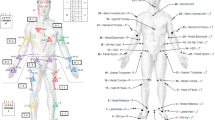Abstract
In adults, visual inputs do not appear to contribute significantly to automatic postural muscle responses (90–100 ms latency) activated by transient support surface displacements causing threats to standing balance, but are activated through slow pathways with latencies of more than 200 ms. However, it has been shown that the postural sway behavior of early walking infants is strongly influenced by visual flow cues that falsely signal self-movement. To determine whether there also are significant contributions of vision to automatic postural muscle responses in this age group, two groups of infants were tested on a moveable platform; pre-walkers (n=6) and early walkers (n=6). Pre-walkers did not show any measurable effect of visual condition (vision vs no vision) on muscle response characteristics. However, the integrated gastrocnemius activity of early walkers increased significantly in vision versus no vision conditions (P<0.05). These results show that visual cues contribute to, or modulate, the automatic postural responses in children who are in the developmental transition to independent walking.
Similar content being viewed by others
Author information
Authors and Affiliations
Additional information
Received: 10 May 1996 / Accepted: 23 January 1998
Rights and permissions
About this article
Cite this article
Sundermier, L., Woollacott, M. The influence of vision on the automatic postural muscle responses of newly standing and newly walking infants. Exp Brain Res 120, 537–540 (1998). https://doi.org/10.1007/s002210050429
Issue Date:
DOI: https://doi.org/10.1007/s002210050429




